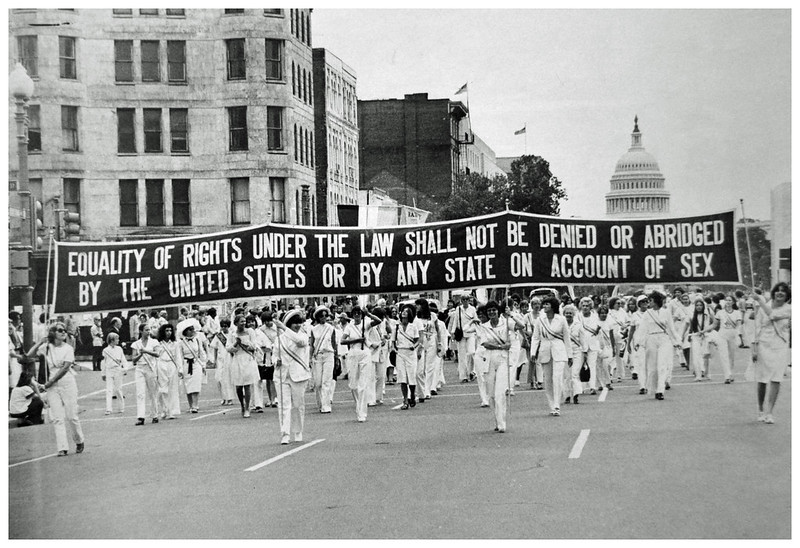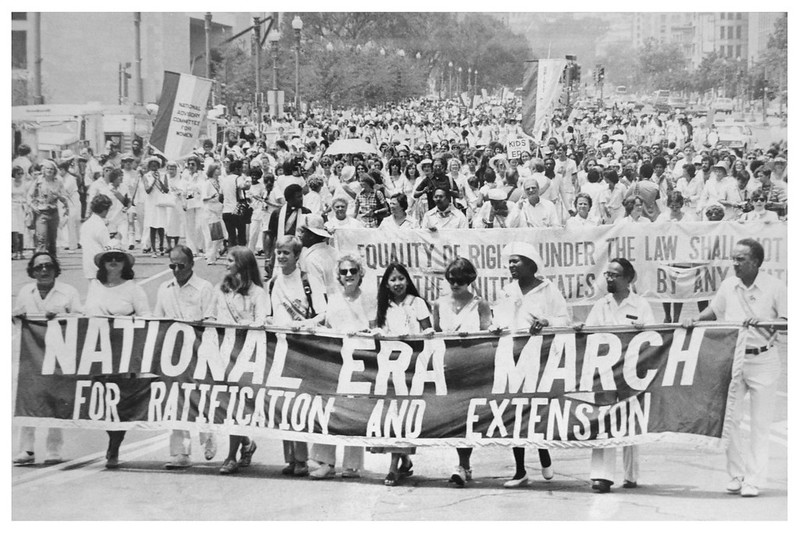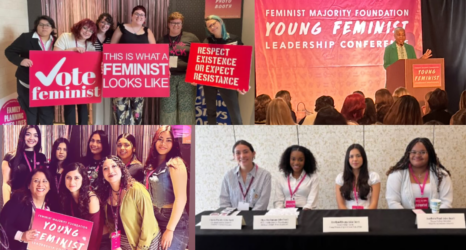
This is the third in a multi-part series examining the half-century fight to add women to the U.S. Constitution—and a game plan on where we go from here.
Read Part 1: “We Want In!” and Part 2: A Long History of Obstruction, Delay and Trickery. And check back every Wednesday for a new installment.
Part 3: A Patchwork of Laws, Statutes and Court Rulings
“Sex discrimination has such a long history and tradition in the United States,” Erwin Chemerinsky, dean of UC Berkeley School of Law, told Ms.
“Sexism is deeply ingrained in so much of our law as well as social practices. I think having that statement [the ERA] in the Constitution really matters [because] it says we’re rejecting that history of sex discrimination and sexism.”
The ERA would have concrete impacts on women’s lives.
“For those who question the need for the ERA,” Rep. Jackie Speier (D-Calif.) said in a statement, “they need look no further than the gender wage gap that continues to keep women and families from achieving their full potential, pregnancy discrimination that forces women out of the workforce, persistent and insidious violations of the rights of survivors [of gender-based violence] and much more.”
While there is a patchwork of constitutional and statutory provisions to prohibit some forms of sex discrimination in some circumstances, many of these provisions have been undermined, overturned and even repealed. And all are subject to interpretation by the U.S. Supreme Court.
Until now, the Supreme Court has interpreted the 14th Amendment’s Equal Protection Clause to provide limited equality protections against sex discrimination—but even these limited protections could easily be overturned by the Supreme Court.
In fact, conservatives on the court have long disputed that the Equal Protection Clause provides any protections for women.
In 2011, former Justice Antonin Scalia said in an interview that the Equal Protection Clause should not apply to women because it was never intended to do so in 1868 when it was adopted.
“You do not need the Constitution to reflect the wishes of the current society,” he claimed. “The only issue is whether it prohibits [sex discrimination]. It doesn’t. Nobody ever thought that that’s what it meant. Nobody ever voted for that. If the current society wants to outlaw discrimination by sex, hey, we have things called legislatures, and they enact things called laws.”
The current majority on the court could easily follow Scalia’s reasoning. Five of the nine Supreme Court justices are current or former members of the Federalist Society (as was Scalia), which advocates “originalism,” or looking to the intent of the Constitution’s authors for its meaning.
And we know that the men who wrote the Constitution intentionally excluded women from its protections—despite Abigail Adams’ pleas to her husband, John, just months before he drafted the Declaration of Independence, to please “remember the ladies.”

“Women’s rights should not depend on the current majority on the Supreme Court,” Constitutional law scholar and former dean of Stanford Law School Kathleen Sullivan told Ms.
“We are the only major democracy in the world with a written Constitution that does not have an equal rights amendment to protect equality between men and women. That’s a national embarrassment. It is also an unfortunate hole in our Constitution that leaves women’s rights vulnerable to the shifting winds of the future judicial majorities in interpreting the 14th Amendment.”
Federal laws prohibiting discrimination can also be weakened. Women have made numerous gains over the past five decades—from Title VII barring sex discrimination in employment to the Pregnancy Discrimination Act, and from educational equity safeguards in Title IX to the Violence Against Women Act, and much more.
But all these legislative gains can be wiped out by a hostile Congress or Supreme Court—or chipped away slowly and insidiously.
An Equal Rights Amendment, on the other hand, is forever.
Keep reading:
This piece is excerpted from the Spring 2020 issue of Ms.
Become a Ms. member to read the rest—and get even more of our feminist reporting and analysis delivered to your door, or to your mobile device, each time we release a new issue!





